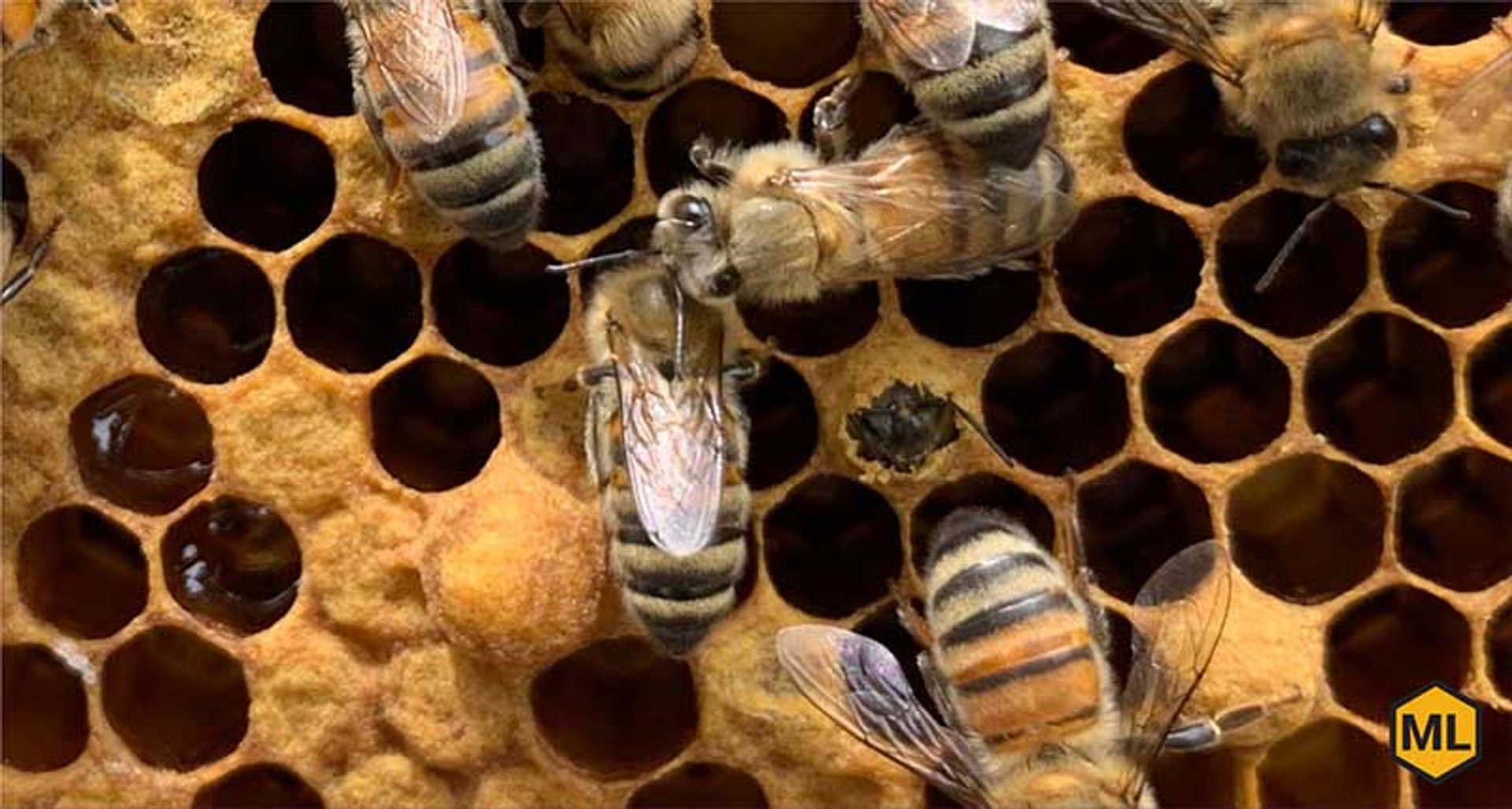Drone Comb for Mite Minimization
A senior beekeeper at Field Day one year told me that in this era of beekeeping, all colonies have mites. The problem is what happens when the mite population gets out of control.
I scoffed. Convinced I couldn’t possibly have mites in my hives, I randomly did a check to prove myself right. I was wrong. Not only were there mites, but they were having a party with every mite from a twenty-state area. It was quite depressing—almost as depressing as finding those hives dead this spring because they never did recover last fall (I suspect) from a summer of mites.
This year I’m being proactive, and I’m using plastic drone comb.
The Theory Behind Drone Comb
Drone brood removal is based on three aspects of the mite’s biology:
- Mites spend most of their time in capped brood cells.
- Mites can be found 5–12 times as often in cells with drone brood as in those with worker brood.
- Mites using worker brood as a host average 1.3–1.4 offspring, while those using drone brood average 2.2–2.6 offspring. So, by removing capped drone brood from an infected colony, you remove a disproportionately large number of mites without affecting the worker population, and you remove those mites with the highest fecundity (from Drone Brood Removal for the Management of Varroa destructor, Nicholas W. Calderone, Cornell University Master Beekeeper Program)
Using Drone Comb
This non-chemical method has its advantages, a primary one being that you can use it throughout honey production season. Being new to this, here’s how I went about it.
Obtain Drone Comb
Drone comb, which has a larger cell size, comes in a plastic frame (link to item No. 420 and 420-M); you may also obtain drone foundation for insertion into a standard frame.
Another option is to encourage bees to make drone comb. Place a medium or shallow frame in a deep box; chances are they’ll draw out the remaining space in drone-sized comb.
How Many?
Generally, two per established colony. I’ve got two in the upper deeps of each of my established hives.
When to Add
Early in the season when bees are busy drawing comb, not focused on filling it. You can add it later (like when you know you have a problem), but this is about prevention. It is easier to never let the mite population build up than work to knock it down.
Where to Add
Like everything in beekeeping, there are varying opinions on this. Cornell University’s Master Beekeeping Program recommends adding it one or two frames from the edge; many other have had success adding them in the middle of the brood nest. Find a method that works for you.
When to Remove
Once the frame is predominantly capped, remove and replace with either another frame of drone comb or another frame to keep bees from filling in the space with their own creative comb. Kill the brood and any hitchhiking mites, typically by freezing it 1-2 days. If you used the medium/shallow frame method, you can break off the drone comb and reinsert the frame into the hive.
Dealing with Dead Brood
Again, there are a couple schools of thought on this. One recommended method requires four frames per colony; two on the hive at any given time, and the other two in the freezer. When the two in the hive have been mainly capped, thaw the two in the freezer and swap them with the hive comb. House bees will clean up the recently thawed drone comb, getting a protein meal which helps recoup the energy investment they made in the drones. Freeze the just-removed capped frames until the two frames in the hive are ready to be swapped out again.
To minimize my investment in drone comb (and save freezer space), I instead only freeze the capped brood for a few days. I then slice off the caps and gently smack the edge of the frame on a rock in my backyard pond. (Sending the larva into the mouths of happily awaiting fish.)
I then rinse off debris and insert it back into another hive where the brood comb is ready for removal. This method means I’m often rotating drone comb in and out of hives, but I don’t mind working different hives of bees every few days.
If you don’t have anxiously awaiting fish, or your stomach doesn’t like the “eeewww” factor of the method I used, you can remove the cap to make it easier for birds and bugs to clean up the comb. If you’re blessed with a lot of extra time and a strong stomach, you can pick out the dead larva with a toothpick before reinserting it back into a hive. A lot of beekeepers I talked with think we should remove the dead larva, as that allows the bees to spend their energy doing things they do best (like making honey).
How Long to Use Drone Comb
Until the queen quits filling it. As nights cool down, the queen will slow down and stick towards the inner frames with brood. Remove it then for use next season, again replacing it with a standard frame.

